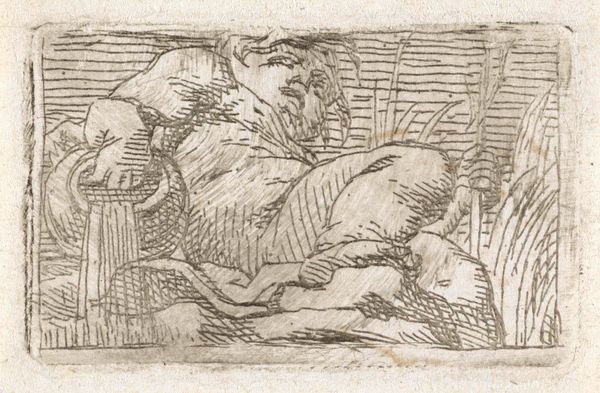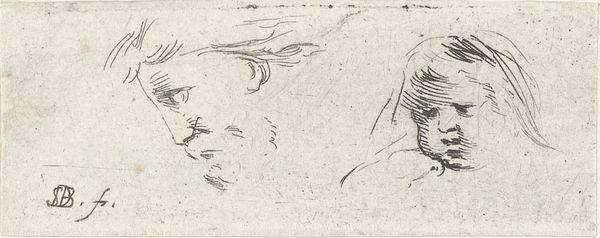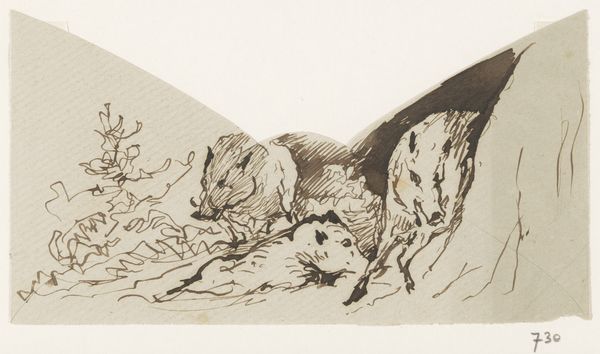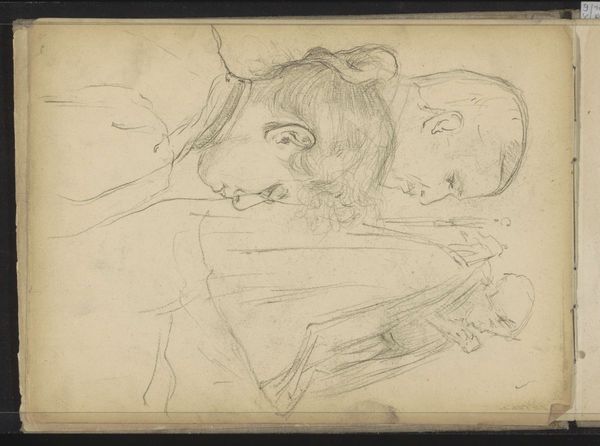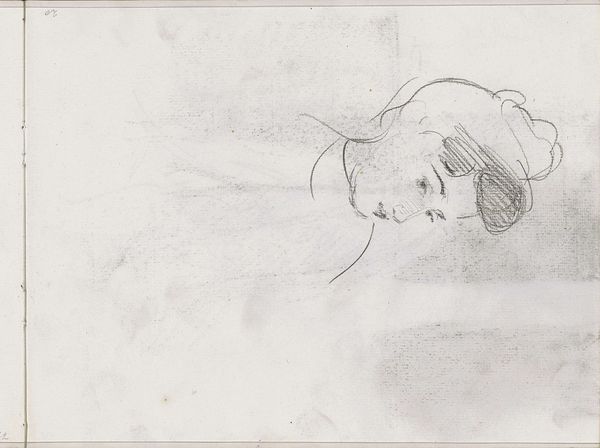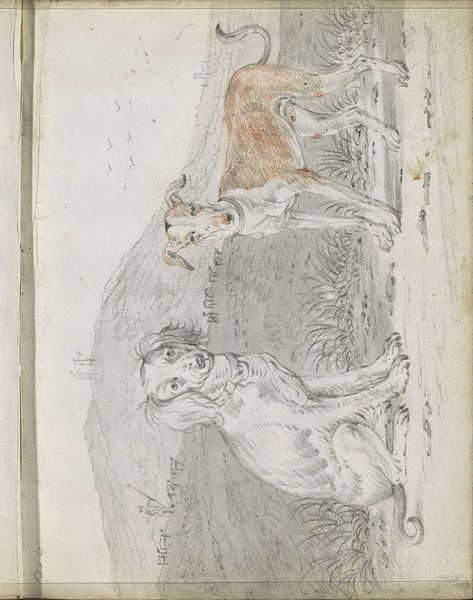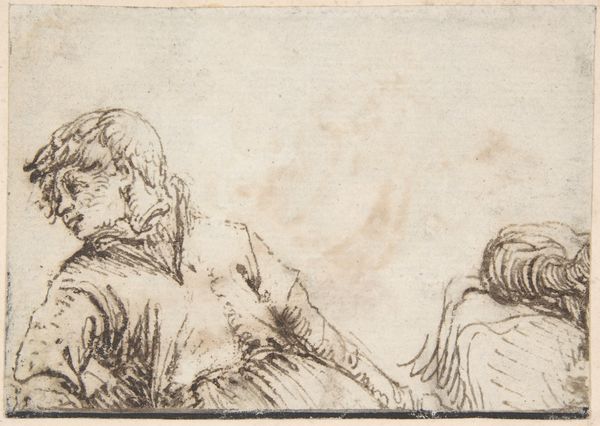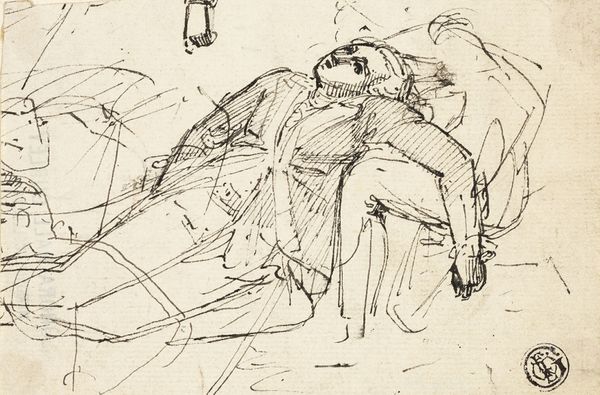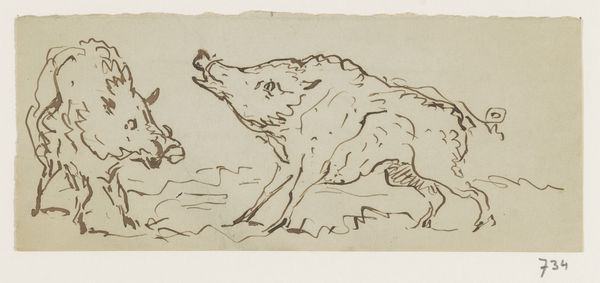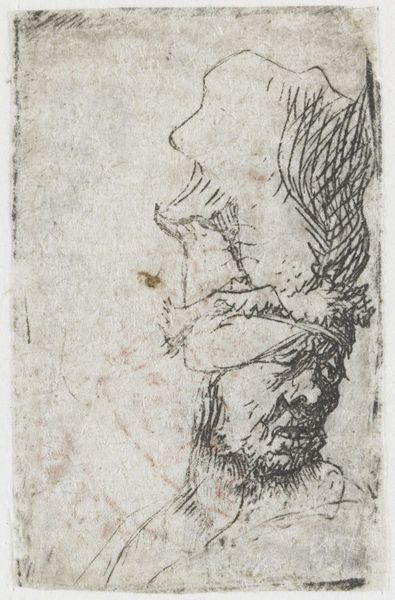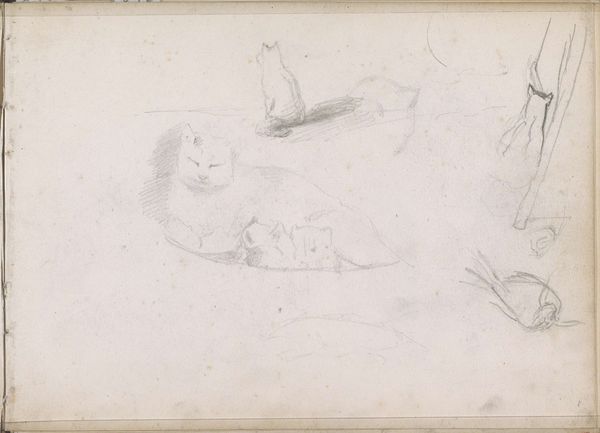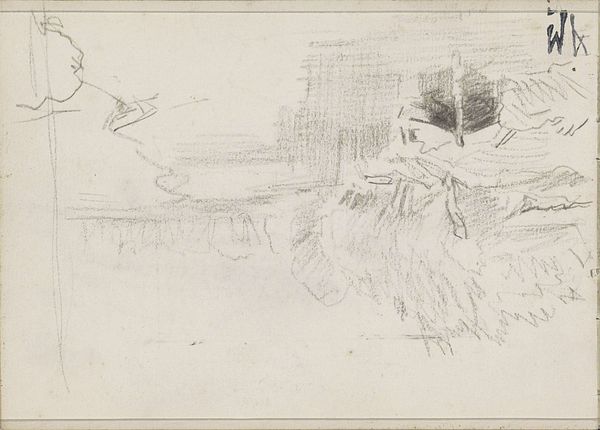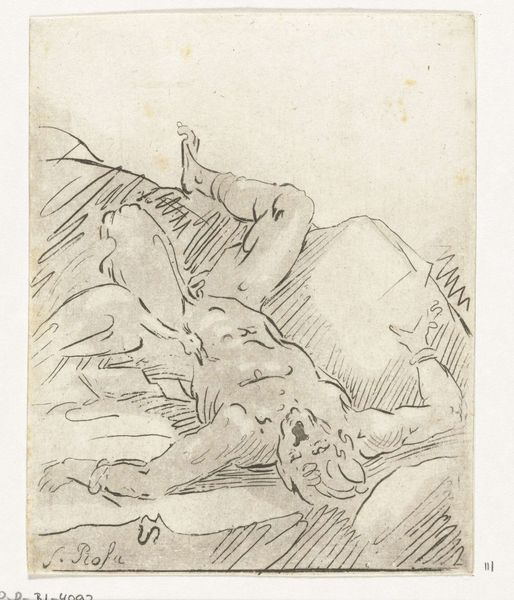
print, etching
#
baroque
# print
#
etching
#
history-painting
Dimensions: height 26 mm, width 65 mm
Copyright: Rijks Museum: Open Domain
Editor: This is "The Head of Mary with the Dead Christ" by Cornelis Schut, dating from the early to mid-17th century. It’s an etching. The starkness of the lines and the close proximity of the figures give it a very intimate and mournful feel. What do you see in this piece? Curator: The effectiveness of Schut’s composition is largely due to its economy. Note the masterful use of line; its directionality guides our eye. Consider how the etched lines create both form and shadow. The angularity of Christ’s face is echoed in the stark lines behind him, a brilliant semiotic deployment of visual language. Mary’s rounded face and softer lines offer a clear contrast. Editor: So the difference in line quality contributes to the overall meaning? Curator: Precisely. Schut uses the inherent qualities of line to distinguish between the living and the dead, grief and suffering. Furthermore, examine the empty space, how the lines that surround each head ultimately bring them together. The lack of details and absence of color amplifies the pathos by forcing the viewer to confront the stark reality of death and loss. What do you make of it? Editor: I hadn’t considered the lines themselves having so much symbolic weight. The visual structure underscores the emotional impact. Thank you for elucidating the art. Curator: Indeed. Through close inspection of the artist's construction, we uncover powerful emotional resonance. A valuable lesson learned.
Comments
No comments
Be the first to comment and join the conversation on the ultimate creative platform.
